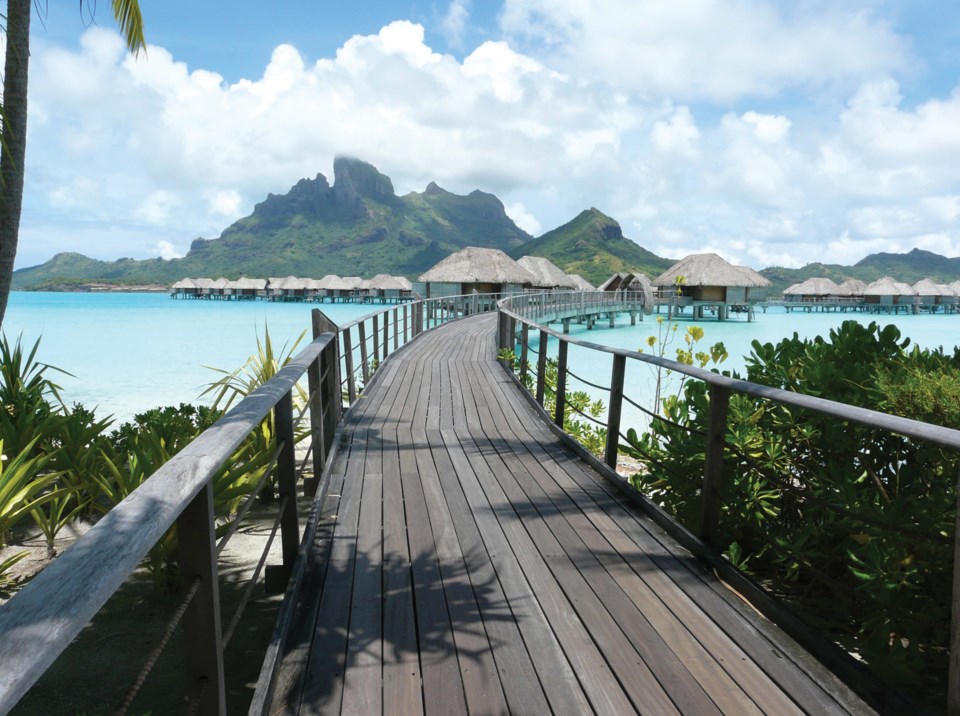Most visitors come to French Polynesia for the clear-water snorkelling and white-sand atolls. But black pearls, produced by the black-lipped oyster, are considered the world’s best, and fully half of them come from here. Many upscale resorts in these South Pacific islands have a pearl shop, but the greatest number of buying choices is in Papeete, the French Polynesian capital, on Tahiti. This town of 26,000 has at least two-dozen pearl shops, all within walking distance of the docks where huge cruise ships like the Costa Deliziosa and the Asuka II tie up.
At the high end are such maisons as Frédéric Missir, Tahia and Robert Wan. Wan, French Polynesia’s leading international marketer of black pearls, also has a Musée de la Perle in his store on boulevard Pomare. It’s free and worth a visit to get some graphically friendly grounding in the black-pearl world.
Dioramas highlight different parts of the story. One shows a pearl diver at work and we learn that “the people of Polynesia are among the most accomplished divers in the world,” able to free-dive as deep as 40 metres and stay under as long as three minutes, using no weights, “only their arms to pull them down.”
Theirs is an all-but-lost art, though: today’s black pearls are almost entirely farmed in carefully monitored lagoons, mainly in the distant Tuamotu and Gambier archipelagoes, where the water is exceptionally clear, clean, warm and untroubled by boat traffic.
Still, a visit to the Musée de la Perle is useful. It will take you through the qualities of a pearl: size, shape, surface purity and lustre. These things determine its grading: A, B, C and D. Colour doesn’t usually factor in, although a black pearl that’s blue is rare.
Hina Urarii, the manager of the Mihiarii shop at Rue Leboucher 24 (Mihiarii also has an outlet upstairs in the Papeete public market), tips a plastic tub over a large cloth. Out pour dozens of pearls. You can choose anything on the cloth for 200 francs (about US $1.80). If nothing suits you, Urarii can produce a bucket of loose pearls at whatever price point you like, up to 30,000 francs (about US $275). The 200-franc ones are C or D grade. You need to get up to 7,000 francs for A and B pearls.
“You can have some A’s at 5,000,” she says, “but you need to be really lucky.”
On the counter next to the pearly cloth is a display of simple silver or gold settings. Choose one (they cost between roughly 1,000 and 12,000 francs) and you can get it mounted in-shop the same day.
Pearl-hunting in Papeete is a good way to explore the town, which is strung out along the waterfront and is, essentially, about four streets deep. You can stand in front of the former Stuart Hotel on Boulevard Pomare, where Henri Matisse stayed in 1930, and look out at the view of Papeete Harbour. Matisse painted it from his balcony. Luckily, in those days the giant cruise ships didn’t block his sightlines.
For information on French Polynesia, visit the Tahiti Tourisme website at www.tahiti-tourisme.pf.
More stories at www.culturelocker.com



